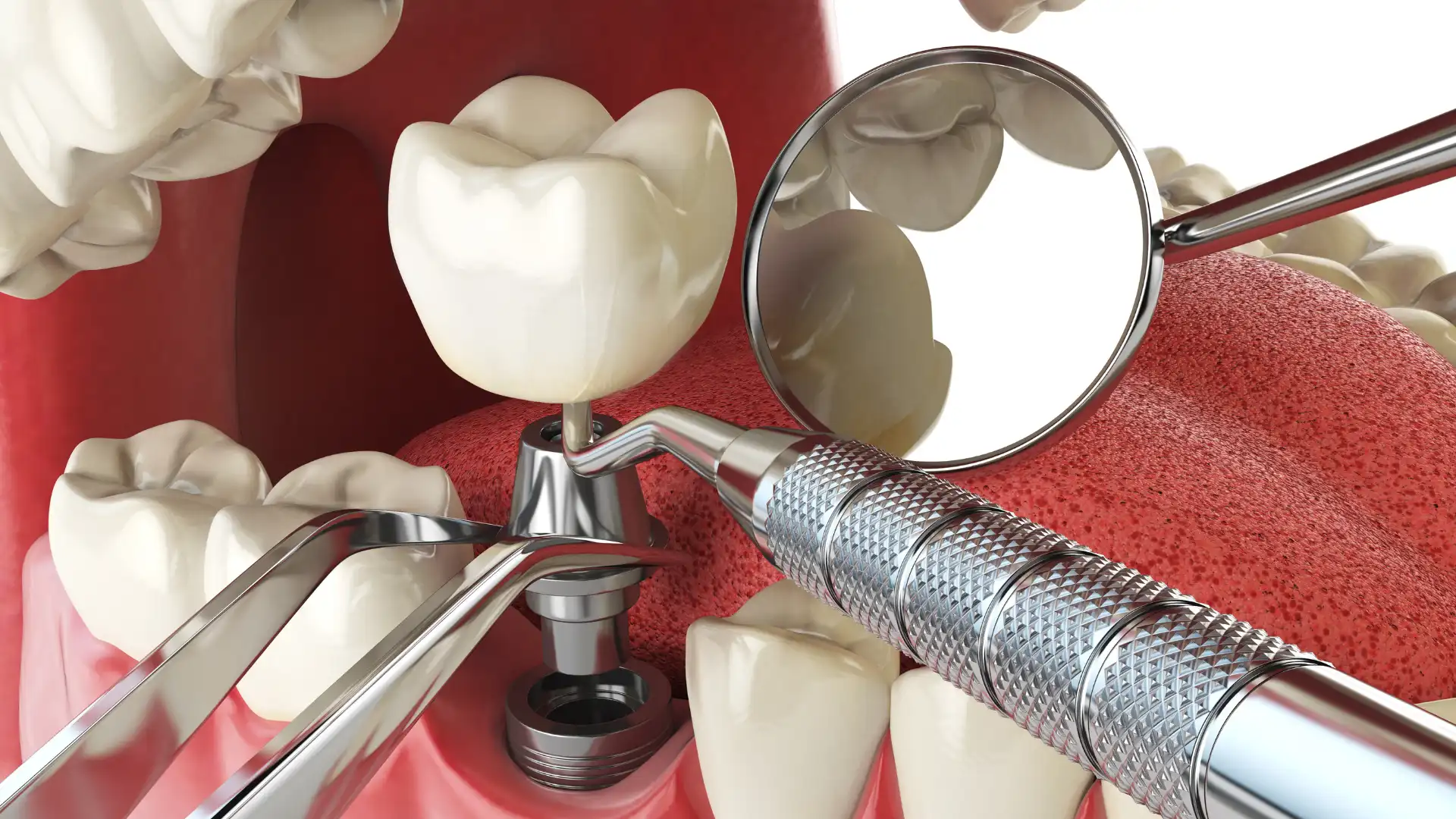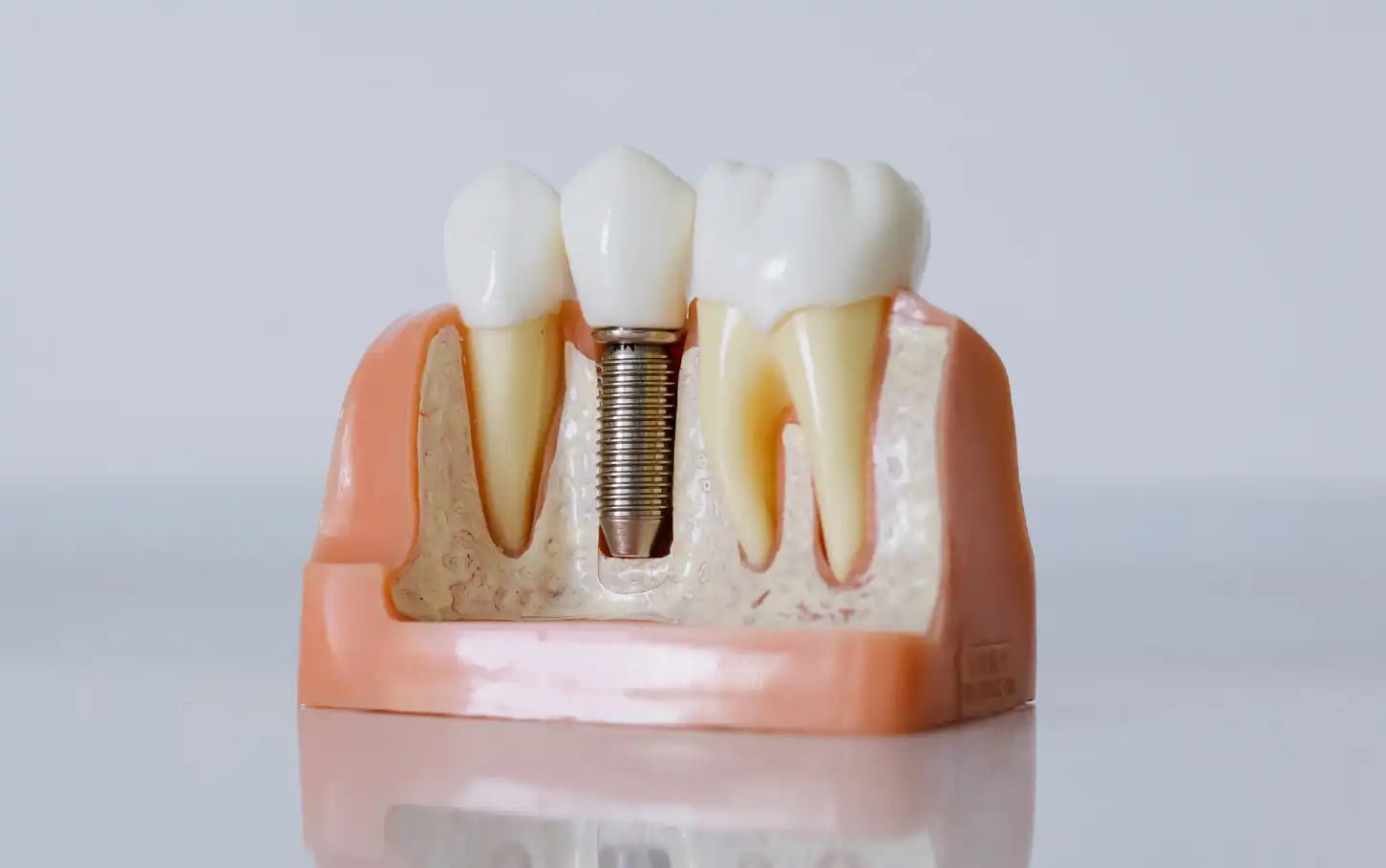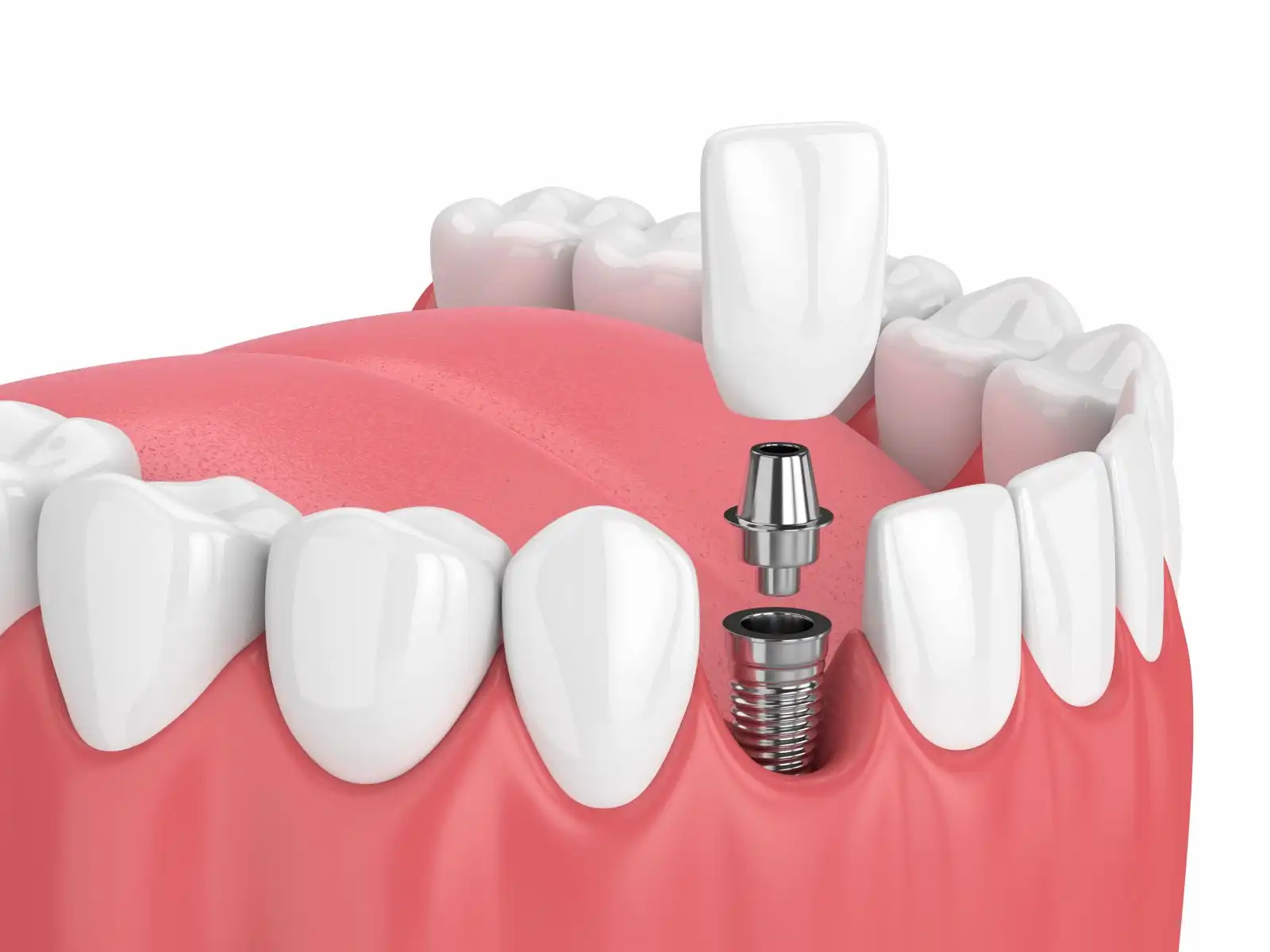
Implantology
Live a Complete Life Again!
Losing a tooth – whatever the cause – is permanent and always difficult to accept. Tooth loss is one of the best examples of how we often realize the true value of something to our daily lives and quality of life only after we have lost it.
Dental implantology, or artificial root replacement, has decades of history in Hungary as well. Today, dental implantation is one of the most advanced and widely used methods of replacing missing teeth, representing a cornerstone of modern dentistry. It provides a fixed prosthetic restoration made of titanium, which can last a lifetime and offers the same look and function as natural teeth.
Implantation
- enables replacement of teeth individually, without grinding down healthy adjacent teeth
- restores the feeling of having one’s own, healthy teeth – an invaluable relief
Thanks to high-quality biocompatible materials and refined surgical techniques, implantation today is considered a routine, painless procedure for the functional and aesthetic rehabilitation of teeth.


Who Is Eligible for Dental Implants?
In Hungary, dental implants can be placed in patients over the age of 18 who are in good general health. Implantation is suitable at virtually any age for the replacement of one tooth, multiple teeth, or even a full arch.
Common contraindications for implant placement include:
- uncontrolled diabetes mellitus
- severe cardiovascular disease
- untreated hypertension
- bleeding disorders
Materials and Longevity of Implants
Only biocompatible materials can be placed into the jawbone to ensure proper osseointegration and to avoid rejection. Therefore, implants are typically made of titanium.
With proper oral hygiene and regular dental check-ups, implants can remain in the oral cavity for the long term. The prosthetic restorations placed on the implants (crowns, bridges, dentures) should generally be replaced every 10–15 years due to wear, but the implant fixture itself does not need to be altered.
Thus, dental implants represent an excellent and long-term investment in a better quality of life.
The Implantation Procedure
Implant placement is preceded by several preparatory stages, including a thorough examination and detailed treatment planning.
If the patient has sufficient bone volume, the titanium fixture is surgically placed into the jaw at the site of the missing tooth. This serves as the foundation for future crowns, bridges, or prostheses. The procedure is a routine surgery lasting 15–60 minutes, depending on the number of implants, performed under local anesthesia and completely painlessly.
A healing period of 2–6 months follows placement. After this time, the definitive prosthetic restorations (crowns, bridges, dentures) are fixed onto the implants.
You do not have to live with missing teeth!
Whether one tooth or an entire arch is missing, dental implants provide a reliable solution.
Functional and Aesthetic Benefits
Beyond aesthetic concerns and reduced self-esteem, missing teeth can also cause physical problems:
- impaired chewing function
- digestive disturbances
- bone resorption due to neglected tooth loss
- sunken facial appearance
- tilting of adjacent teeth
5 Key Facts About Dental Implants
- Implant success rate exceeds 97%
- Made of titanium, which fully osseointegrates with the jawbone and is not rejected
- Durability can last a lifetime
- Placement is completely painless
- Prevents alveolar bone resorption


What Will Happen During Your Visit?
- At the first consultation, we assess your condition and create a treatment plan.
- At the agreed appointment, the implant surgery is performed.
- The titanium fixture is placed into the socket of the missing tooth under local anesthesia, in a sterile environment, pain-free. Surgery time: 15–60 minutes, depending on the number of implants.
- After surgery, a healing phase follows. Typically after 2–6 months, the final, aesthetic prosthetic restoration is placed on the implant. During healing, a temporary prosthesis is provided to maintain comfort and appearance.
Thanks to rapidly advancing dental technology, today we have access to implants of exceptional quality, perfectly suited to the human body.
Why Might Sinus Lift or Bone Augmentation Be Necessary?
For successful implantation, additional surgical procedures may sometimes be required. A sinus lift (sinus augmentation) may be necessary when there is insufficient bone volume in the posterior maxilla. In such cases, the maxillary sinus floor is elevated surgically, and bone grafting material is placed.
In cases of long-standing tooth loss, gum and bone may resorb. If the diagnostic examination shows inadequate bone volume at the planned implant site, bone augmentation is required. This involves placing bone substitute material in the deficient area. Bone grafting surgery is performed painlessly under local anesthesia, and in many cases the implant can be placed during the same procedure. In other situations, a healing period of several months may be required before implant placement.


